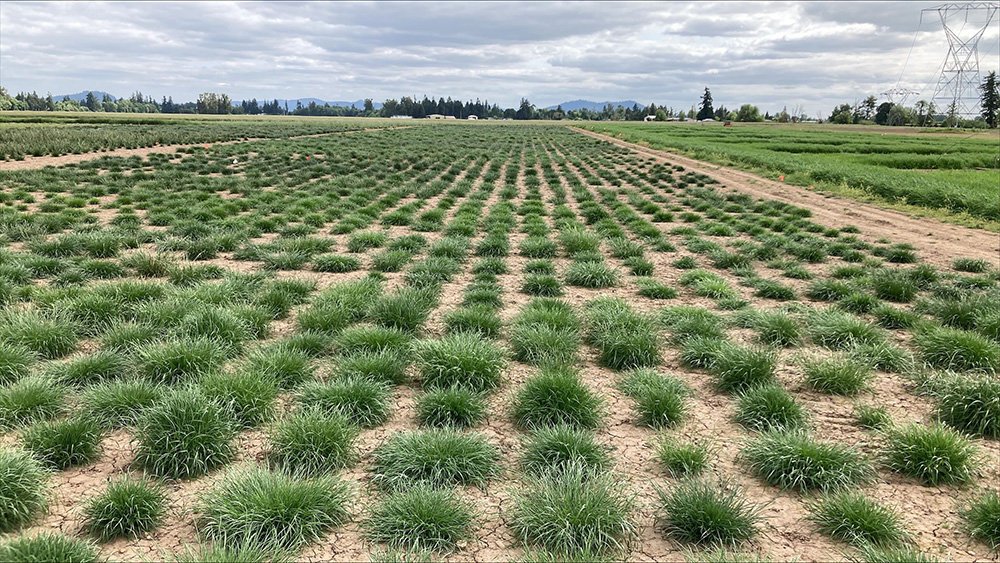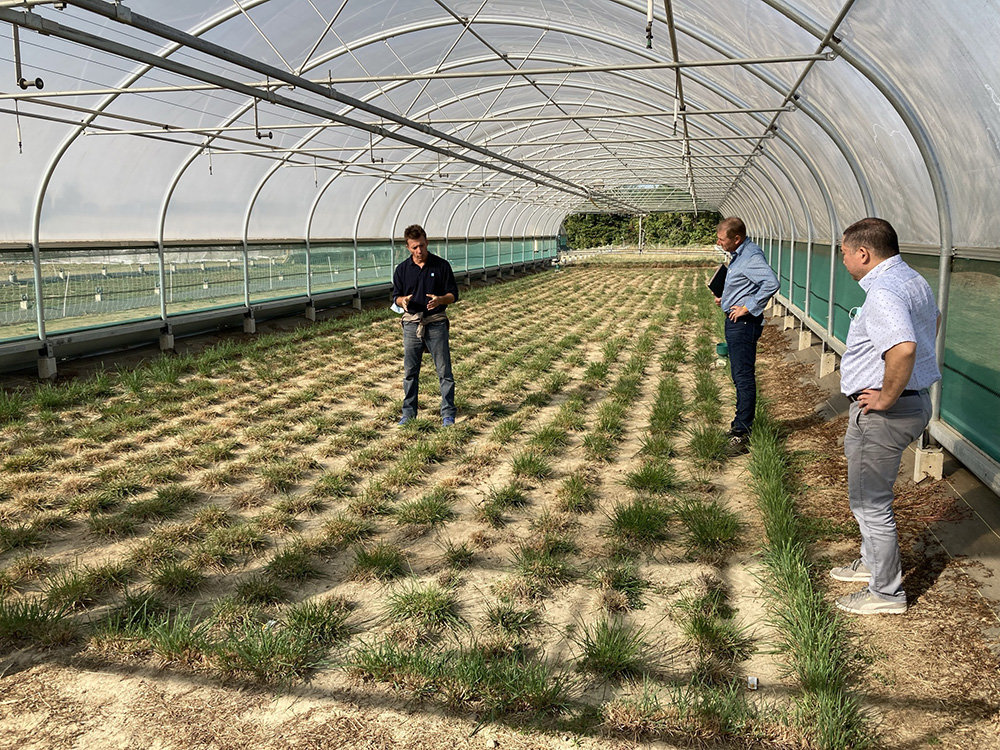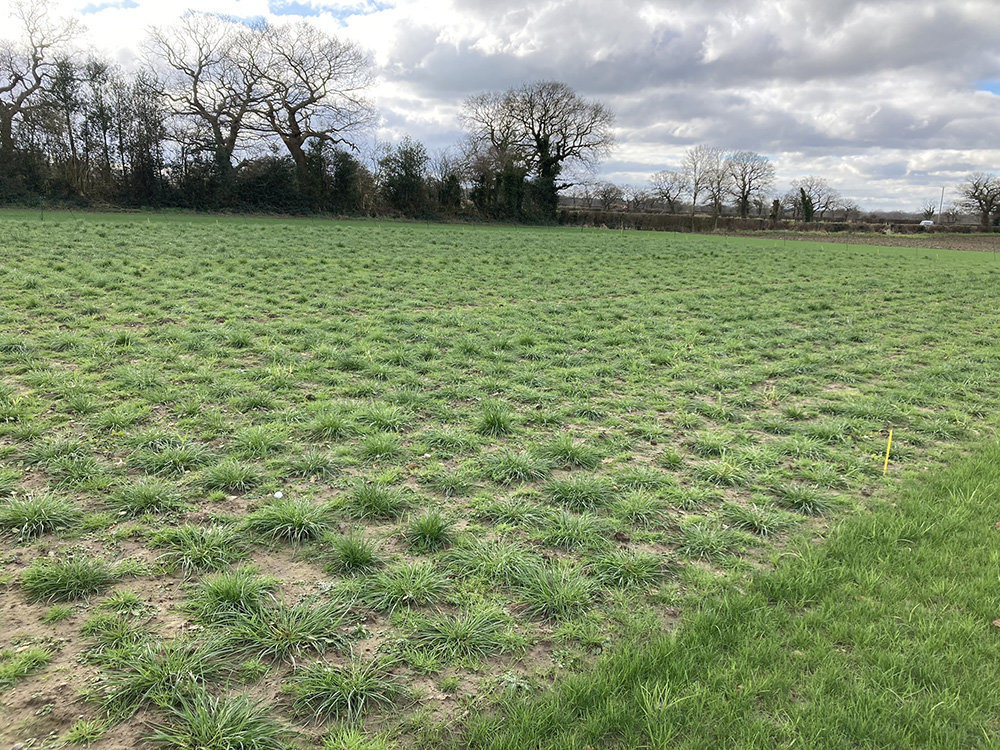A future warming climate often prompts talk of Mediterranean-style conditions for the British Isles, with a consequent change not only in the flora and fauna of the British Isles, but also remapping the suitability of crops. More vineyards, for example, or fields of sunflowers across Southern England.
But as far as UK dairying – and their grass – is concerned, says Piet Arts, climate change will not force UK farmers into a wholesale switch to alternative grass species.
“Looking at the European map of climate change predictions, the biggest changes will be in southern Europe. But in northwest Europe – England, Ireland, parts of Holland, we’re looking at more polarisation of weather: longer periods of drought alternating with longer periods of rain, such as the UK has experienced this past winter.”
If that’s correct, the UK strategy needs to focus on improving the species – ryegrass and clovers – that are the mainstay for grass-based dairying in the UK, while introducing other species to complement and add resilience.
“Of those ‘extreme’ weather events – alternating between drought and prolonged rainfall – it’s drought that most concerns grass breeders,” Piet reveals. “It’s about the resilience. Drought is detrimental to plant growth, full stop.”
For the UK, however, none of the climate prediction models suggest increased frequency of the prolonged periods of drought that cause widespread plant death, Piet notes. “We might have two weeks, three weeks, four weeks of drought. Most grasses can withstand up to four weeks without damage, so while leaves may go off-colour, few plants will die.
“But drought remains the big threat to grass yields. We must look at how we maintain levels of production in grasses through those kinds of weather events.”

The UK and Ireland already has a distinct grass genetics, with very little genetic overlap between the continent and the British Isles, he points out.
“Developing something that works in France, say, won’t help UK farmers,” he explains. “Spring growth, digestibility, heat stability, accumulated mean temperatures – they’re all different. French grasses must cope with extended periods of 35 degrees, something we don’t see in England.”
What tends to distinguish these more Mediterranean-style grasses, notes Piet, is their natural ability to enter a period of dormancy that protects them against drought or heat. By reducing water usage, they concentrate on protecting the roots. When the drought breaks, or temperatures fall, they exit this ‘survival mode’ and start growing again.
It’s this characteristic that partly explains tall fescue’s well-known drought-defying abilities, Piet says. As well as exhibiting deep roots, it also contains genes that control dormancy. So too does cocksfoot, but ryegrass doesn’t exhibit that genetic characteristic.
“Dormancy is based on many, many genes. Work’s being done to identify them all, but then you must transfer them between species. With the way things stand on genetic modification, it’s not likely.
“Gene editing may eventually play a role, especially as the technology develops to allow editing on multiple genes at the same time. It’s more likely, however, that we will be able to identify major genes that have an influence on root systems and pursue that path. Even with more enlightened regulatory environment for gene editing, any kind of development on that front is far away.”
So, the challenge for UK grass breeders is how to turbocharge conventional breeding to introduce new characteristics that farmers are expected to need by the mid-21st century. Grasses bred today won’t be ‘seeds in the ground’ until the 2040s.
“For our own UK breeding activities, we’ve always drawn on material from Barenbrug’s operating companies around the world, in a bid to improve and develop UK-specific germplasm. For example, New Zealand genetics have always been interesting – winter growth, early spring development, and so on.”
Piet says a further advantage of having research and development centres in other regions and countries is the ability to test country-specific genetics under different climatic conditions. In France, the company has been conducting trials with ‘rainout shelters’. These in-field structures, not dissimilar to a greenhouse, protect land from rainfall and allow experimentally controlled drought stress to be introduced into trials.

Barenbrug started working with these in southern France eight years ago and five years ago in the Netherlands. Plants that displayed favourable drought tolerance in those early trials are now being incorporated into new varieties.
“How soon some of those might be released? Well, you can select on one trait, such as drought tolerance, but that variety will still have to perform on yield and rust tolerance and all those other traits.
“I’m not expecting any farmer to buy a variety for drought tolerance alone,” laughs Piet. “They still want performance when it’s not dry, they still want disease tolerance, they still want digestibility and yield. We’ve got to introduce that drought tolerant trait while keeping all the others at high levels, otherwise it’s not going to be a viable commercial variety.”
So drought-tolerant ryegrasses may eventually find their way to British farms. But before that, how can farmers adjust their swards to not only instil greater resilience for a changing climate, but also maintain the climate smart, grass-first attitude that we’ll need to keep UK dairying climate positive too? What might a ‘go-to’ grass mixture look like in the 2030s and 2040s?
“I think we’ll incorporate more modern iterations of traditional grasses like cocksfoot and tall fescue, those that deliver drought tolerance to a mixed sward by compensating one another. When one species has trouble, the other fills in,” muses Piet.
“But you need to find stable mixtures. Cocksfoot, for example, can take over if it finds itself in a favourable environment. It’s quite aggressive and with early spring growth, in wet conditions, you could be faced with a field that needs cutting but too wet even for the cows to graze, let alone a mower.”
Piet says non-grasses are also key, pointing to research showing how mixed swards containing legumes and herbs will cope better with drought.
“At the end of the day, if those improved ryegrasses arrive, we might not need the complementary species. However, given the variety of climates across the UK, even as the climate changes, we’re never going to find a ‘one size fits all’ mixture. Some regions might do better with ryegrass-only swards, while others will need to diversify species.”
Perhaps the ideal answer lies in the molecular programmes being undertaken by Barenbrug. Genomic selection involves examining the DNA profile of a plant to predict how it will perform in a certain environment. That data can then be combined with gene editing tools to find specific genes that might improve a trait more dramatically, or faster.
“Interestingly, while there’s not much direct work done with ryegrass, the global focus is on cereals like wheat and barley and rice,” explains Piet. “We look at the genes investigated in those species and check if the same ones are active in ryegrass. Then you can decide whether to work on it.”
But gene editing is an expensive process, which combined with patchy regulatory approval, means it’s not yet a standard plant breeding tool.
Further adding to the complication for breeding ryegrass is that unlike cereals, where each variety is one single genotype – every single plant in a wheat field has the same genetics – grasses have millions of genotypes in just one pasture.
“I’ve heard scientists say that there is as much variability in one ryegrass variety as in all existing Holstein cattle in the world together,” says Piet. “There are about 36 traits we use to define a variety, with all plants within a variety having to fit within certain bands of description.
“That’s another advantage of using the rainout shelters for drought selection, or hydroponic systems for nitrogen-use efficiency: the different types within a variety segregate very effectively. And we can find many different types to start on the next step of the breeding programme.
Beyond varieties that might mitigate the effect of climate change on grass production, Barenbrug’s also investing in ways to help farmers decarbonise dairying. With ruminant methane, for example, there’s a known link between better fibre digestibility and decreased emissions. Barenbrug has launched research programmes that use both conventional breeding and gene editing to develop this further.
“We know which genes to tackle to make fibre more digestible,” Piet says, “and within 5-10 years, we can expect to see the first varieties with that trait. Australia’s likely to be the first market.”
Then there’s nitrogen-use efficiency, tested through hydroponic systems. “We’re seeing large differences within varieties, because until now they’ve never been tested for this trait. Incorporating the best performers in new crossing programmes is the start of improved NUE and we’re already testing the first varieties with those traits. Again, we’re probably 5-10 years away from having varieties that have a significantly lower need for nitrogen.
“That will be good progress, but at this stage clovers remain the easiest way to apply less nitrogen in pasture systems. Good amounts of white clover can take off a hundred kilograms of nitrogen per year. I don’t see that kind of progress happening with ryegrasses, but the combination of legumes and a future high NUE variety would be quite something.”

The final part of the decarbonisation jigsaw lies in pasture’s sequestration properties. While Piet acknowledges the power of grassland to capture and store carbon, he says there’s no specific breeding programme that’s targeting this. “We know that roots are influential here: that’s why tall fescue is so much better at sequestration than ryegrass.
“But selecting a specific sequestering trait would be a long-term effort, for it’s hard to measure the increase of soil organic matter within a few years. You have to do it over many years. Then there are the variables: soil type, and the effect of other species in mixture, to name but two.
“There’s still a lot of science to be done on sequestration, but the bottom line is that pasture systems keep carbon locked up. Turning them over releases carbon, so keeping them in permanent pasture is likely to give the best outcome.”
The bottom line, says Piet, is that there’s going to be a future for grass – provided we can maintain its productivity in a changing climate.
“Drought tolerance is important, but we still need performance when it’s not dry. The job of a plant breeder is to incorporate as many traits as possible into a single variety, but keep all the necessities like yield, tolerance and persistency. Climate change traits must come on top of those.
“That’s what makes grass breeding so interesting. It’s a never-ending story.”







